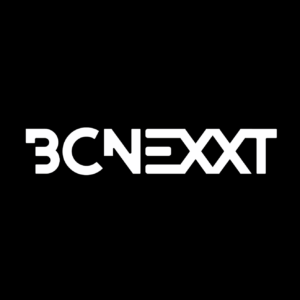The dramatic increase in digital media consumption has resulted in an enormous amount of ongoing content creation – from direct-to-consumer programming and livestream broadcasts to video-on-demand catalogs on over-the-top (OTT) platforms. Video file sizes are rapidly growing to keep pace with consumer demand for high definition (HD) content and more immersive experiences like virtual reality (VR) content (heard of the metaverse recently?).
For most organizations, capturing and editing in these larger formats is now common. However, many are still struggling with ensuring the content they create remains protected, searchable, and accessible for VOD/OTT or reuse. The definition of archiving is changing, but the good news is that advancements in storage now mean that you have more options for ensuring your content remains accessible and protected from malicious attacks like ransomware.
Consider that in 2025 over 116 exabytes (EB) of new digital storage will be used for digital archiving, content conversion, and preservation. Software-defined object storage can help media and entertainment organizations achieve faster time-to-value for video production, distribution, and preservation by employing scalable object storage with intelligent content management that supports the evolution of hardware while preserving the integrity of content.

Object Storage Solves Numerous Performance and Access Challenges
It is predicted that between 2019 and 2025, overall object storage capacity for media and entertainment organizations is expected to grow from 14.3 EB to 52.7 EB. An on-premises software-defined object storage solution can radically simplify the ability to manage, store, and protect data while allowing S3/HTTP access to any application, device, or end-user. This type of technology enables the data archive to be a flexible and immediately accessible content library that enables remote workflows, on-demand access, and massive scalability.
Utilizing this method, as new digital content is created, it goes through production workflows and is then stored for access, delivery, and long-term preservation. For added security many object storage solutions support content locking so files cannot be changed for a specified period of time. The most secure solutions support a no file system method of deployment removing one of the primary vehicles for malware and ransomware delivery and exploits.
Let’s look at how advanced software-defined object storage technology is designed to meet the performance and access demands of rapidly evolving digital media workflows:
- Streaming, VOD and OTT: Workflows have rapidly moved to the cloud and distributed environment—all over the Internet that utilizes the HTTP protocol for delivery. All software-defined object storage solutions were developed to support data transfer over HTTP. You can think of object storage as a mix between economical storage and a web server. This makes object storage ideal as a massively scalable content library that can be accessed by content delivery networks or that can be accessed directly from media playing applications for private streaming or direct-to-consumer streaming for long tail delivery.
- Enabling Efficient Reuse: Large video and project files are often stored on tape storage that must be manually restored or striped over many tapes, delaying the time-to-last-byte (TTLB) of requested data. Software-defined object storage supports a partial file restore (PFR) function to enable a large video file to be clipped for rapid turnaround of a specific portion of a video (or video highlight) directly from the archive layer for editing, review, or streaming. Broad CODEC support is available through integration into asset management solutions. This enables media and entertainment organizations to more effectively reduce TTLB when restoring, sharing, or streaming archived video.
- Multisite Collaboration: Digital assets need to remain available for reuse and continued collaboration. Software-defined object storage ensures that files written via S3, HTTP, NFS, or SMB are all accessible, editable, and immediately retrievable. Making content access easier with different protocols makes software-defined object storage ideal for private content streaming, long-tail delivery, origin storage, and enabling OTT services directly from the archive storage layer.
- Supporting Larger File Workflows: Broadcasters, streaming services, studios, and production houses all have rapidly growing libraries of back catalog content. This includes produced videos, raw footage, editorial cuts, and promotional assets. All this content needs to be protected and preserved but remain searchable and accessible for reuse and repurposing. A software-defined object storage archive provides a lower-cost tier of on-premises storage that is easy to manage and delivers local network throughput supporting transfer rates needed for 4K, 8K and VR files. This enables media and entertainment organizations to keep content on high-performance SAN or NAS while it is being processed and then offload it to more economical object storage in uncompressed or compressed formats once completed for the maximum return-on-storage investments. Once rendered, the video content needs to then be stored in an easily accessible video archive for post-production access and future use.
- Simplify Digital Asset Management: The ability to retrieve files quickly is paramount for video editors and asset managers. Files need to be searched and delivered to the right place as quickly and efficiently as possible. With a software-defined object storage solution, media and entertainment organizations can manage media directly on the storage layer or through several digital asset management and media asset management solutions. Whether it is a new video or archived footage, files are easily retrieved using flexible access methods and intuitive search capabilities. Leveraging metadata attributes, files can also be searched and retrieved easily for editing, streaming, and publishing
- Securing and Protecting Content: The risk to content libraries comes in many forms including hardware failure, bitrot, administrative mistakes, natural disasters or more nefarious events like malware or ransomware attacks. The most advanced software-defined object storage solutions continually check the integrity of content and employ various features to ensure content is protected and hasn’t been tampered. You also have the option to replicate content to other sites or to cloud services for an added measure of disaster recovery protection.

Conclusion
Video-driven organizations can now enable private streaming, provide longtail video on-demand, and centralize long-term video archives from various sources on a software-defined object storage platform that is more accessible and easier to manage than tape, more secure and economical than the cloud—and can support the throughput, security and protection requirements for large files and content libraries.
Software-defined object storage helps to ensure rapidly scaling datasets are continuously protected and instantly accessible while eliminating tedious storage management, reducing TCO, and enabling distributed workflows. This allows media and entertainment organizations to store, protect, manage, and access data on their choice of hardware—eliminating media storage silos, optimizing capacity utilization, and reducing the total cost of ownership of the storage infrastructure.
About the Author
Adrian “AJ” Herrera has an extensive background bringing innovative storage software, cloud storage services and media services to market. Before joining DataCore in 2021, he was the head of marketing at Caringo (acquired by DataCore), establishing the company as a leader in the object storage space. He was on the founding team and headed marketing at Nirvanix, one of the first enterprise cloud storage services, where he helped to grow the company from pre-funding to having over 700 business customers ranging in size from start-ups to Fortune 10 organizations. He was also an early employee at Musicmatch, a digital audio software and streaming service acquired by Yahoo!, where he held Business Development and Product Management roles.









